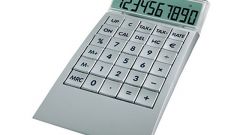You will need
- 1. Knowledge of methods to study timing: electronic timing and photos of the day.
- 2. The unified tariff qualification reference of works and occupations of workers (ETCS).
- 3. Tariff system operating in your industry.
Instruction
1
Determine the category of the work performed using ETCS. Rate the nature and complexity of operations and refer to the tariff level.
2
Using a scale of charges set out in your organisation or an approved centrally (in the public sector), determine the hourly tariff rate corresponding to this category of work.
3
Determine the time (in hours or minutes) or production rate in the physical measure (kilograms, meters, pieces, etc.) on the basis of photographs of the working day or timing.
4
Calculate piece rates. This can be done in two ways. If in Step 3 you identified the time, then piece quote can be obtain by multiplying the rate for your specified time. If you determined the rate of production, the piecework rate you get by dividing the rate of pay (hourly or daily) to an appropriate output rate (hourly or daily).
Note
The size of wages does not depend on when the work was performed: daytime or night time. To change the size of the piece-rates required if there is:
- change labour standards (standards and standard time) in connection with the improvement of the production conditions (e.g., changing technology, the replacement snap-on is more progressive in the improvement of working methods).
- revision tariff rates.
- change labour standards (standards and standard time) in connection with the improvement of the production conditions (e.g., changing technology, the replacement snap-on is more progressive in the improvement of working methods).
- revision tariff rates.
Useful advice
By determining the wages necessary to keep consistency of time units that are selected tariff rates, units of time, relative to established norms (hour or shift). If you are using a change rate of production when calculating rates use changeable (day) tariff rate. If you are using the hourly rate of production to determine pricing, use the hourly tariff rate.











